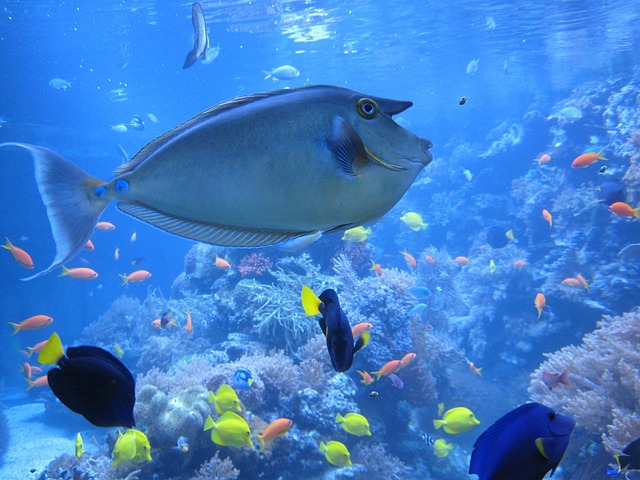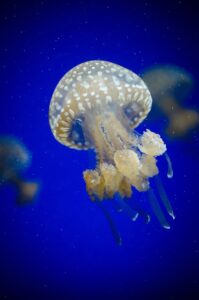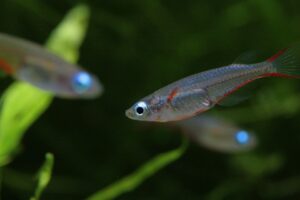
Maintaining a pristine aquarium is a rewarding endeavor that brings the tranquility of aquatic life into your home. However, algae growth can disrupt this serenity, turning your crystal-clear waters into a murky green mess. Algae are a natural part of any aquatic ecosystem, but when left unchecked, they can overwhelm your aquarium, obscuring views and potentially harming fish and plants. Fortunately, effective algae control is achievable through a combination of understanding, prevention, and management techniques.
Understanding Algae
Before delving into control methods, it’s essential to understand what algae are and why they grow. Algae are simple, plant-like organisms that thrive in water, utilizing sunlight, carbon dioxide, and nutrients to grow. In aquariums, they can appear as green, brown, or red films on glass, rocks, and plants.
Common types of algae found in aquariums include:
- Green Algae: Often considered the least problematic, green algae can sometimes be beneficial in moderation, as they are a natural food source for some aquatic species.
- Brown Algae (Diatoms): Typically appear in new aquariums and can coat surfaces with a brown, dusty layer.
- Blue-Green Algae (Cyanobacteria): This algae type can quickly cover surfaces with a slimy, toxic layer, posing a threat to aquatic life.
- Red Algae: Found mostly in saltwater aquariums, these can be challenging to remove once established.
Causes of Algae Growth
Algae growth in aquariums is often the result of an imbalance in the aquatic environment. The primary factors contributing to this imbalance include:
- Excess Light: Algae, like plants, photosynthesize, meaning that they thrive in well-lit conditions. Excessive or prolonged lighting can promote rapid algae growth.
- Nutrient Overload: An abundance of nutrients, particularly nitrates and phosphates, in the water can fuel algae blooms. Overfeeding fish and decaying organic matter are common nutrient sources.
- Poor Water Circulation: Stagnant water can create pockets of nutrients and CO2, promoting algae growth.
- Inadequate Maintenance: Irregular cleaning and water changes can lead to nutrient buildup and algae proliferation.
Prevention Strategies
Preventing algae growth is more effective than dealing with an established infestation. Here are some strategies to keep algae at bay:
Optimize Lighting
Adjust the duration and intensity of your aquarium lighting to mimic natural daylight hours. Use a timer to ensure consistent lighting patterns, and consider LED lights, which offer customizable light spectrums to suit the needs of both plants and fish.
Control Nutrient Levels
Regularly test water parameters to monitor nitrate and phosphate levels. Perform routine water changes to dilute excess nutrients, and avoid overfeeding your fish. Feed them only what they can consume within a few minutes, and remove uneaten food promptly.
Enhance Water Circulation
Ensure your aquarium has adequate filtration and water movement. Install powerheads or additional filters if necessary to prevent stagnant areas where algae can thrive.
Regular Maintenance
Establish a routine maintenance schedule that includes cleaning the aquarium glass, vacuuming the substrate, and trimming plants. Regular maintenance helps prevent nutrient buildup and reduces the likelihood of algae outbreaks.
Effective Algae Control Techniques
If algae have already taken hold in your aquarium, several techniques can help manage and reduce their presence:
Manual Removal
Use an algae scraper or pad to remove algae from glass surfaces. For rocks and decorations, a soft brush can help dislodge stubborn patches. Be gentle to avoid scratching the glass or damaging plants.
Introduce Algae-Eating Species
Certain fish, snails, and shrimp species are natural algae eaters and can help control algae populations. Examples include:
- Siamese Algae Eaters: Effective at consuming various algae types, including stubborn black beard algae.
- Otocinclus Catfish: These small fish are excellent for cleaning algae off plant leaves and hard-to-reach areas.
- Nerite Snails: Known for their voracious appetite for algae, they are suitable for both freshwater and saltwater setups.
- Amano Shrimp: These shrimp are efficient at consuming algae, especially in planted aquariums.
Adjust Water Chemistry
Ensure that water parameters such as pH, hardness, and temperature are within the appropriate range for your aquarium’s inhabitants. Stable conditions discourage algae growth and promote the health of fish and plants.
Utilize Chemical Treatments
As a last resort, consider using chemical algae control products. These should be used sparingly and according to the manufacturer’s instructions, as they can affect other aquatic life and disrupt the biological balance of the aquarium.
Natural and Biological Methods
In addition to the aforementioned techniques, natural and biological methods can offer sustainable algae control:
Live Plants
Incorporate live plants into your aquarium to compete with algae for nutrients. Fast-growing species like hornwort and water sprite are particularly effective in absorbing excess nutrients, leaving less available for algae.
Maintain a Healthy Ecosystem
A balanced aquarium ecosystem with a well-established nitrogen cycle naturally limits algae growth. Beneficial bacteria break down waste products, reducing nutrient availability for algae.
Conclusion
Effective algae control in aquariums requires a multifaceted approach that combines prevention, regular maintenance, and targeted interventions. By understanding the causes of algae growth and implementing strategies to minimize their impact, aquarists can enjoy a pristine, healthy aquatic environment. Whether through optimizing lighting, controlling nutrient levels, or introducing algae-eating species, maintaining a balanced ecosystem is key to keeping algae in check and ensuring the beauty and tranquility of your aquarium.
#ChatGPT assisted in the creation of this article.








